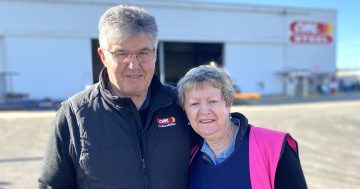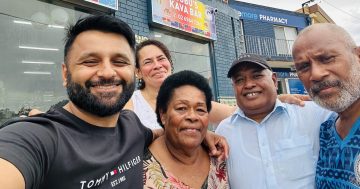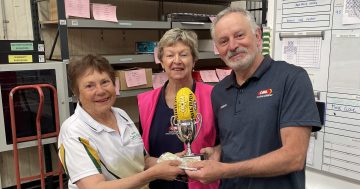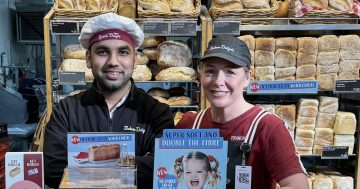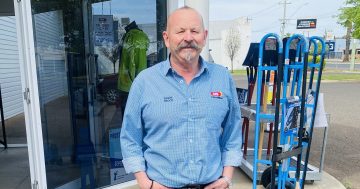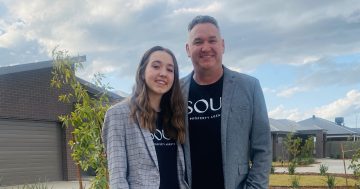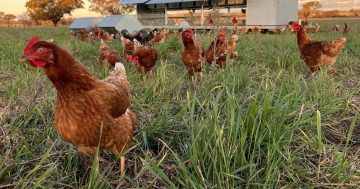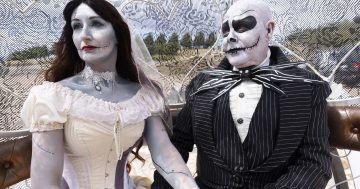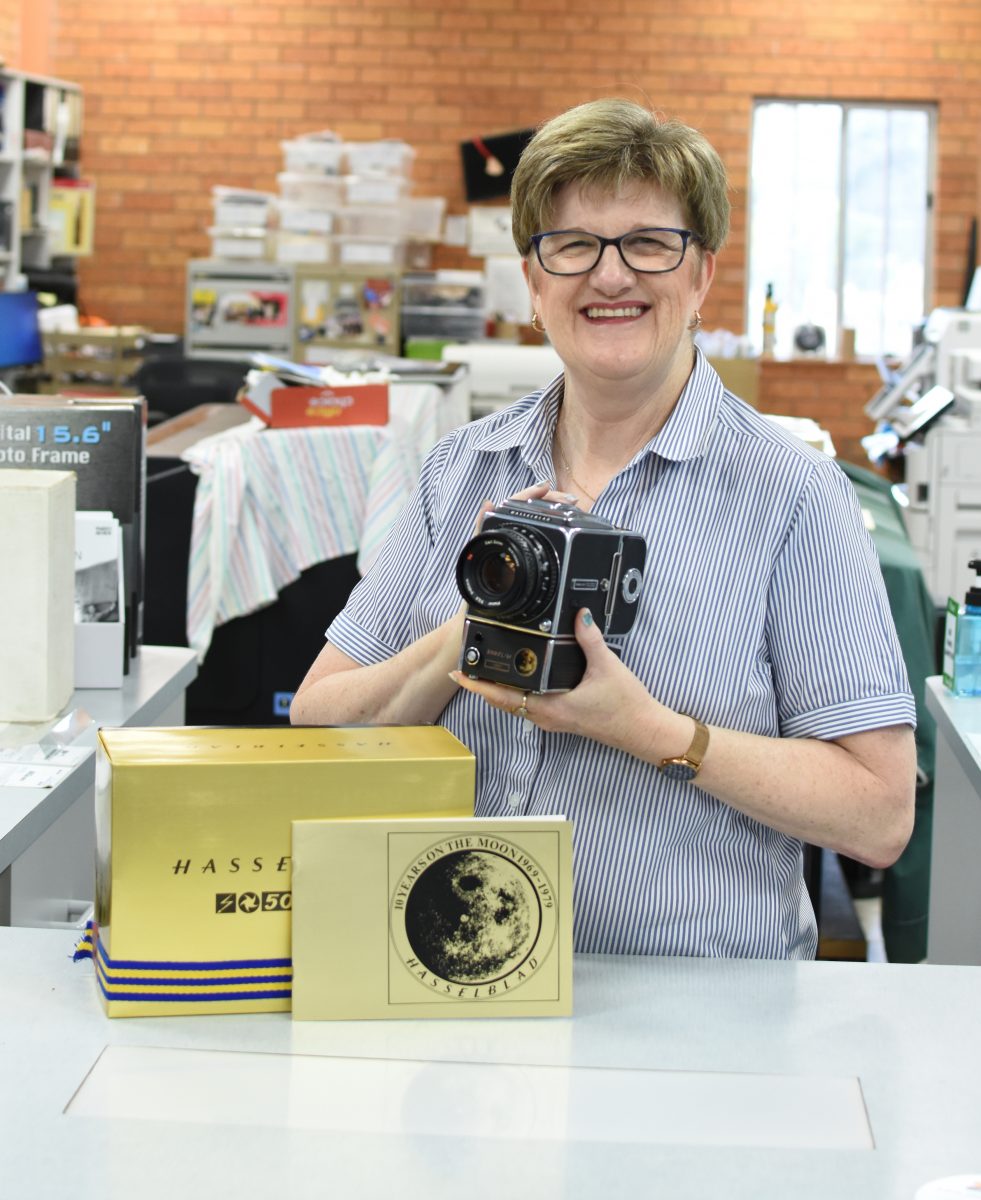
Louise Miller celebrates her store’s 50th with the moon landing camera. Photo: supplied.
Griffith’s first-ever photo shop celebrated a huge milestone on Sunday (2 April), the day marking precisely 50 years since John and Yvonne Miller opened the Griffith Photographic and Record Centre in the Lyceum Theatre at 304 Banna Avenue in 1973.
Later renamed Photosound and now known as Griffith Camera House, the store has continued to adapt and expand in the face of the technological change that overwhelmed its competitors.
To mark the occasion, owner Louise Miller (John’s daughter) unveiled a prized possession of the family business for Region – a rare Hasselblad Data Camera.
The Data Camera was taken on the first voyage to the moon in 1969 to capture images of Neil Armstrong’s first steps, and while the camera that took the actual crater photos was left on the moon, John Miller bought one of a limited edition release of the exact same model, sold by the Swedish company after the Apollo 11 mission.
Two years after the moon landing, Mr Miller, a CSIRO photographer, started developing photos for pharmacies in his spare time.
“A dark room was actually built into his garage at our home,” Louise said. “He would come home at night and do the developing of films and my mum would do the printing. After a couple of years, he thought Griffith needed somewhere to develop their photos, so they decided to open a shop.”
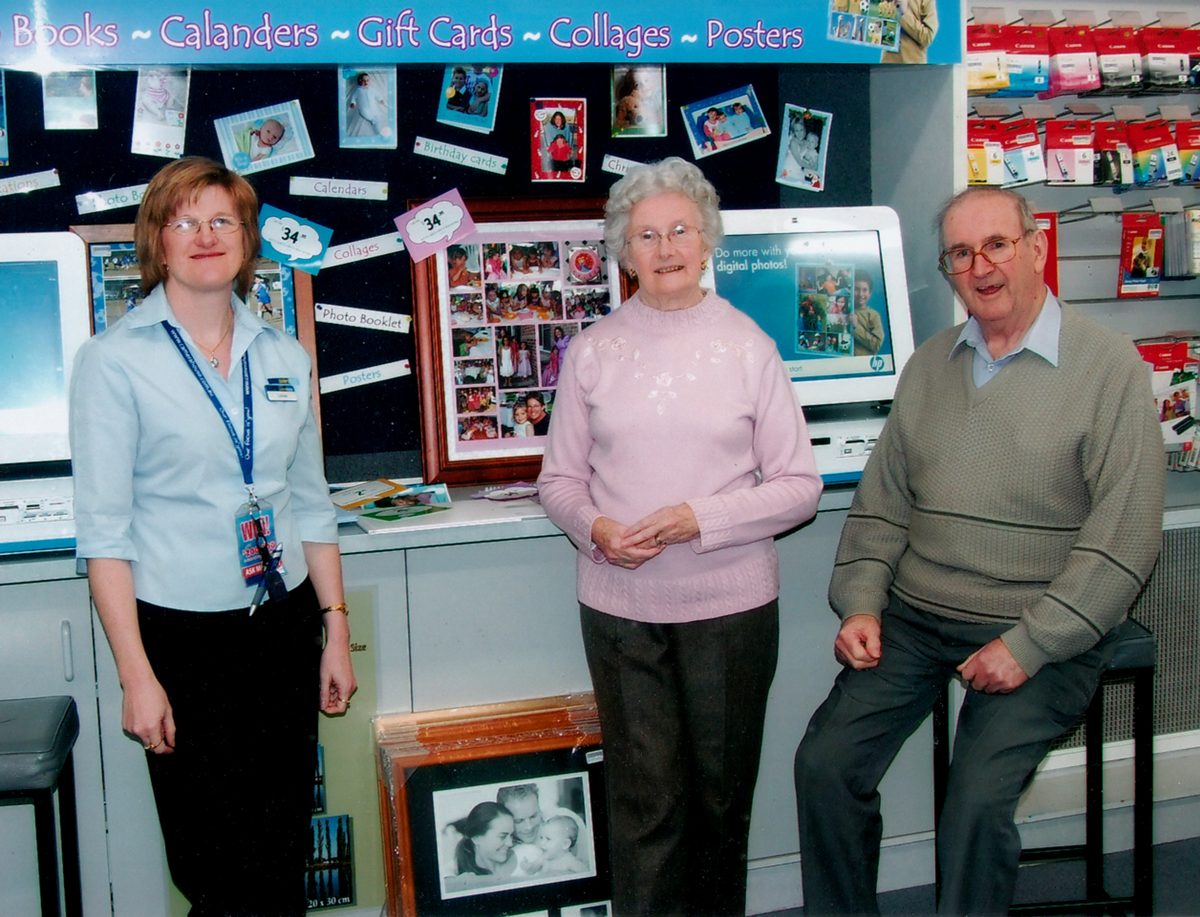
Louise with her parents and store founders John and Yvonne Miller. Photo: Supplied.
Just a month after opening, thieves raided the shop and stole over $1000 worth of merchandise, gaining entry in a skylight above the front door. The family moved to their second, more secure, larger store at 318 Banna Avenue a year later.
“Back then, we still did the developing at the ‘dip and dunk’ at our home,” Louise said.
“When we moved to 416 Banna Avenue in 1988, it was the first time we moved our developing and printing into the shop. We were the first place to do developing and printing in one hour … some days we would stand there and do 100 rolls of film in the hour.”
Louise did her first shifts at the store in 1985 and took over running it when her father retired in 2004. John Miller passed away in 2013. In addition to the store, he is also remembered for the extensive volunteer work he did to help preserve Griffith’s history.

The famous shop was known as Photosound for much of its history. Photo: supplied.
Around the same time, the growing popularity of the iPhone, which made everyone into an amateur photographer, was expected to bring about the demise of smaller photo shops. But Louise saw it as an opportunity to reshape her company.
“As a small business, we can adapt quickly. People are taking a lot more photos than they ever did… it’s a matter of what we do with them. We can help them with archiving them and making them into a print … we do everything from capturing the moment to printing the photo and then producing something from it – we can do the whole cycle. If someone comes in with a project, instead of just printing it, we can reverse that and look at the frame first.”
The store is also known for its exceptional customer service, with Louise able to work her magic and change history when needed.
“When relationships break up, people come in and ask for a partner to be removed from family photos … we can also swap heads.”
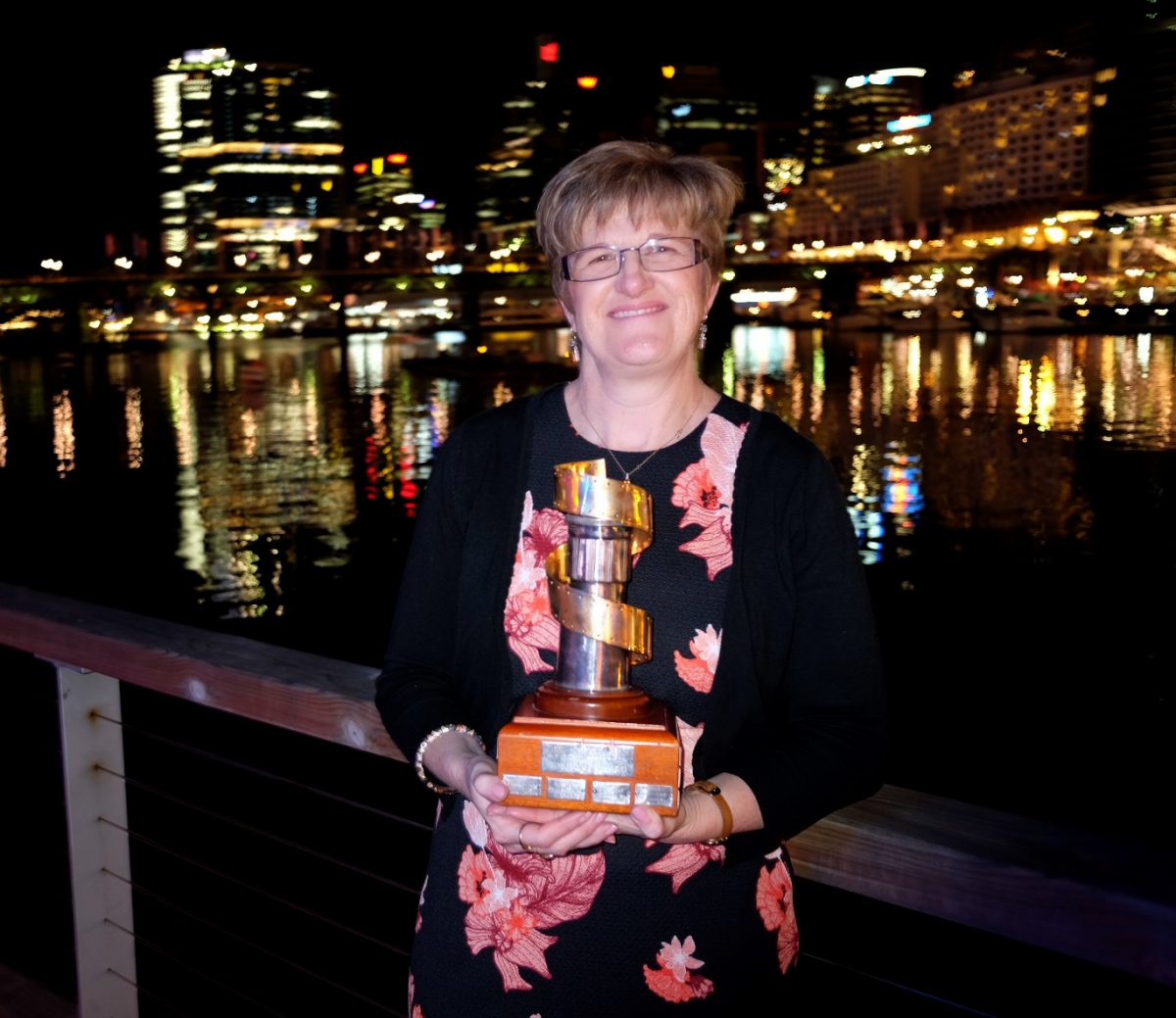
Louise Miller won Camera House member of the year in 2016. Photo: supplied.
Some staff were sensitive about developing risque and nude photos in the early days, but she says times have changed.
“It’s now no big deal these days. Staff say ‘whatever’. People don’t give you anything too bad anymore as they don’t want you to see it.”
Ms Miller is the only female owner within the national Camera House franchise and won the company’s member of the year honour in 2010 and 2016. She says celebrations for her store’s half-century will ramp up in the second half of 2023.
“Keep an eye out on our socials as we tell the stories of our 50 years and celebrate our staff and milestones. We’ll let you know of the events and celebrations we have planned.”







